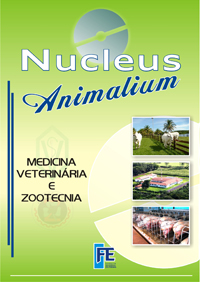ESTIMATION OF GENETIC PARAMETERS FOR Bayesian body weights OF RACE IN A flock Guzera
DOI:
https://doi.org/10.3738/na.v1i1.254Keywords:
Variância genética. Herdabilidade. Correlação genética. Método Bayesiano. Método REML.Variance components. Heritabilities.Variance components. Heritabilities. Genetic correlation. Bayesian method. REML method.Abstract
Data from 1796 animals born between 1978 and 1996 in the Guzera herd of UNESP, Ilha Solteira, SP, were analysed to obtain variance components, heritabilities and genetic correlation for weights at 12, 18 and 24 months of age. The variance components, the heritabilities and the animals breeding values were estimated by the Restricted Maximum Likelihood (REML) and Bayesian methods, with the aim of evaluate properties of the estimates from both methods. The genetic correlations were obtained by CORR procedure of SAS, using the animal breeding values destimated from both methods. The statistic model for the weights at 12, 18 and 24 months, included fixed effects of contemporary groups and the random effects direct additive genetic, maternal genetic, permanent environmental of the cow and residual. The estimates of direct heritabilities were 0.09, 0.08 and 0.12 from REML and 0.07, 0.08 and 0.11 from Bayesian method, the estimates of maternal heritabilities were 0.08, 0.04 and 0.07 from REML and 0.07, 0.04 and 0.06 from Bayesian method, respectively, for weights at 12, 18 and 24 months of age. In both methods the estimates of genetic correlations coefficients were high and similar. The lengths of the confidence intervals from REML were larger than the credibility intervals from Bayesian, suggesting that the Bayesian method gives results with better precision than REML method.Downloads
Published
2009-06-05
Issue
Section
Artigos

